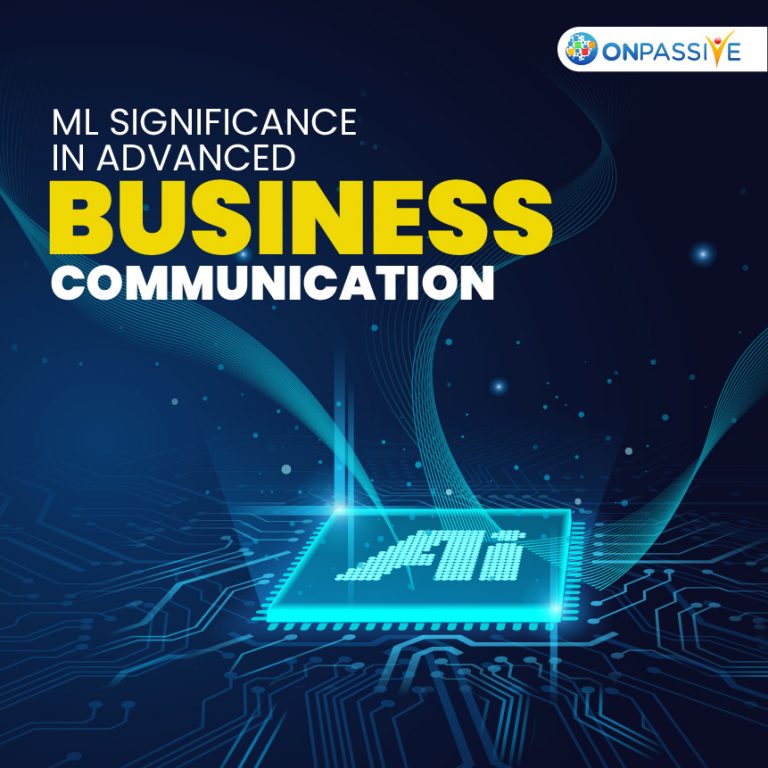
When so many inventions are launched every day, it can be impossible for businesses to keep up with new trends and technology. Soon, we will see a significant shift in how we collaborate both internally and externally in the market. Over the past two decades, the corporate relations landscape has changed dramatically due to the rise of the internet. Wired landlines no longer connect telecommunications networks.
A few years ago, both artificial intelligence and machine learning were called science fiction. However, these techniques are now being used in the real world. Machine learning is a subfield of artificial intelligence that allows a machine to analyze from previous data without having to explicitly program. They improve workplace performance, streamline information delivery both internally and externally, and identify issues in client and team relations that need to be addressed.
In the next two years, machine learning will be increasingly integrated into workplace communication networks, enabling users to analyze complex trends and ultimately improve their efficacy with each experience. So, let us look at how machine learning has altered the face of business communications.
Role of Machine Learning in Business Communication
Several companies have recently recognized the importance of incorporating emerging technologies into their communication networks. In this era of digital transition, where data is a core feature, businesses have become increasingly dependent on automated teaching solutions, Big Data, and improvements in corporate communication processes. Check out how ONPASSIVE’s Machine Learning Lab will help you transform your business communication:
Chatbots
Can you recall the times you had to wait hours to talk about a minor inquiry with a human representative? To talk to a representative, you had to answer different IVR questions. Gone are those days. With the latest inventions and technologies, customers do not dial any number. They just go online and enquire with an AI program called Chatbot. A chatbot replicates a conversation in natural language with a user through emails, websites, smartphone apps, or telephone calls. A chatbot is a new way of communication in business.
Chatbots eliminate manual search and save customers’ time. This AI program is used in various business from eCommerce website to social media apps, from education apps to food delivery apps, chatbots are everywhere. Chatbots also minimize customer service costs for businesses by 30%.
Voice Over Internet Protocol (VoIP)
Call centres remain an essential service channel for customers. As per the market report, after locating your company online, 60 per cent of clients will call your company. Moreover, you can acquire 16 per cent of them via e-mail, just 3 per cent will contact via social networks. Many firms are working to increase the efficiency of their call centres specifically because of this report. The main advantage of VoIP business solutions is the integration of the CRM system. They speed up the processing, interpretation, and management of consumer data.
Email Filtering
When we talk about email marketing, spam mails are something that has been always a concern. Advanced email systems use ML algorithms to enhance the user interface and reduce spam messages. Spam mail and advertising material were detected in the ML software. For example, before you enter your user’s inboxes, Gmail distinguishes emails. The system uses a broad variety of master learning features to identify spam, such as text filters, engagement features and custom filters. Businesses can use email validation tools to avoid spam mails and reduce email bounce rates.
Selective Marketing and Sales
Any corporate organization’s primary goal is to increase sales. Any organization’s sales managers may use machine learning tools to identify trends that tailor the company’s engagement strategies. The sales representative would be able to determine when and where to adjust their strategy by using these trends. This helps employees learn how much to communicate and how much to listen, which is beneficial to their educational plans. Employees may use the established behaviours to better interpret consumer behaviour and provide a constructive relationship.
Conclusion
The above mentioned are only a few of the many ways machine learning can be used in business communication. Apart from improving corporate relations and increasing employee satisfaction, machine learning systems will also improve the consumer experience. They allow you to provide customized and user-centric interactions to your target audience at all touchpoints. Machine learning is a competitive advantage for any business.


